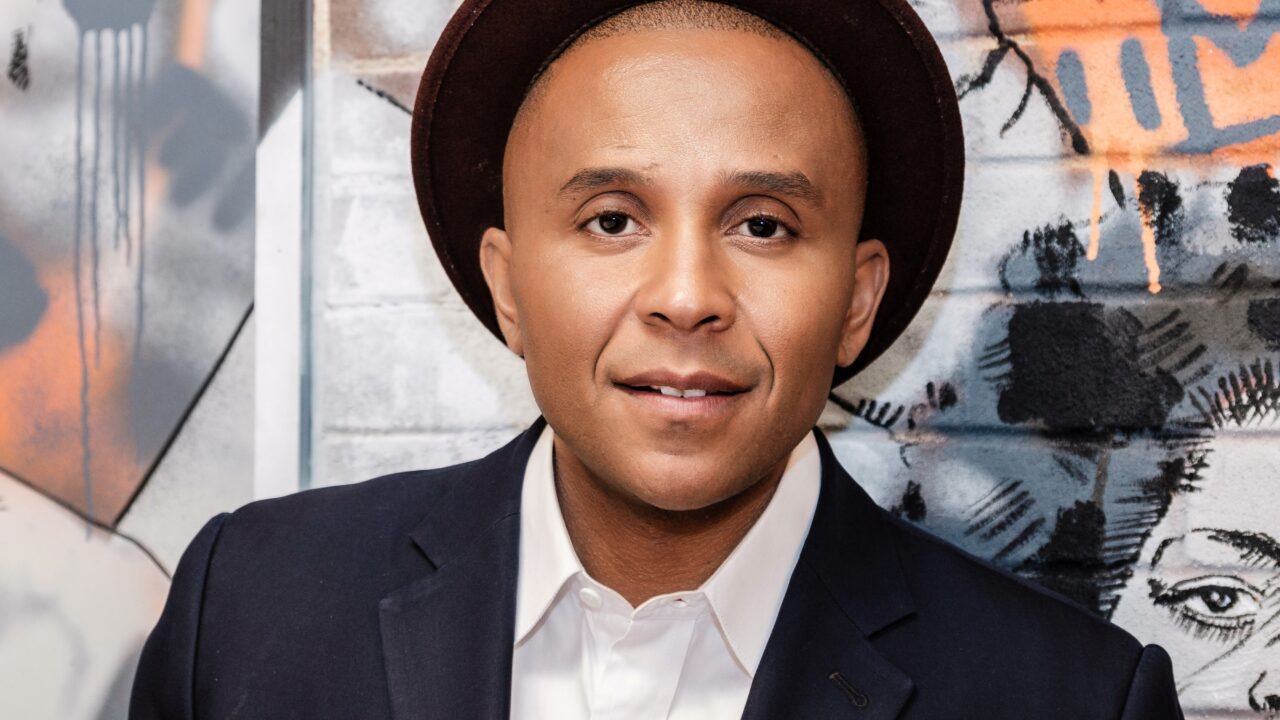As the president of Color Of Change, Rashad Robinson has innovated new strategies to empower Black communities. The organization has led campaigns targeting the array of industries that maintain racial inequality, from Silicon Valley and Wall Street to local prosecutor offices and city halls across the country. After the insurrection at the Capitol on January 6, Robinson shared his thoughts on the relationship between mainstream conservatism and violent white supremacist movements, as well as the types of organizing strategies progressives need to pursue to combat white supremacy during the Biden years. This interview has been edited and condensed.
How do you define white supremacy and what do you view as the relationship between violent white supremacist groups, like the ones that stormed the capital, and mainstream conservatism?
White supremacy is a system of hierarchy that supports the privilege, power, and position of whiteness over everyone else. And it’s obviously connected to patriarchy and other hierarchies.
I think of white supremacy as being held up by three interlocking and reinforcing factors: racist people, racist practices, and the racist principles that govern our individual and collective decisions — a perverse logic running underneath the entire operative system of society. The challenge is that we too often think of these factors as a three-legged stool: take one factor out, like racist people, and racism itself will fall apart. But it’s not a three-legged stool at all. It’s more like a three-digit combination lock: getting two of the numbers isn’t enough, you have to get all three right at the same time, to unlock it and dismantle it. Racism is highly durable and adaptive, and can withstand incredible pressure without changing.
So-called mainstream conservatism is a political force, and an ideology, that serves to defend that hierarchy — people who believe that their society and their lives depend on the privileges that white supremacy delivers to them every day. It fights to maintain the worker exploitation, the uneven distribution of wealth and resources, and the policing that so many Black communities and others experience. We have to remember: inequality and injustice are not unfortunate like a car accident; they are manufactured. And conservatism runs the factory. Doing so requires political and social power, and one arm of that power is violent white nationalism and all the media infrastructure, funding infrastructure, and other kinds of supports and incentives that keep it going. Corporate power is another arm, of both conservatism and white supremacy.
Color of Change is well known for targeting corporations and powerful political actors, especially when they fund hate and seek to fundamentally undermine our democracy. Tell us a little bit more about these entities and their relationship to explicitly white supremacist groups. Where do those behemoths of the mainstream conservative movement fall in the spectrum of white supremacy?
We have to remember that some of the biggest parts of the right-wing infrastructure in this country are not even controlled by those who identify with the right wing, let alone with white nationalism. They don’t identify with it, and yet white supremacy and its political forces couldn’t exist without them. Take corporate media, for example. NBC and its executives probably don’t identify as white nationalists or white supremacists, but through The Apprentice and Saturday Night Live and news coverage, they promoted Donald Trump and helped him craft the big lie about who he was — they made him legitimate even as he was breathing new life into white supremacist groups, mainstreaming their ideas and driving recruitment. In fact, he used the platform that NBC gave him to do all of that.
Another clear example of how this plays out is Silicon Valley: the algorithms that promote and distribute racist content in ways that radicalize people and recruit them into a right-wing organizing infrastructure. There’s a profit incentive for these corporations, which rewards them for doing that better and better every day. So for years, we have known that white nationalists and homegrown terrorists have been able to organize and coordinate on these platforms, but their growth was interlinked with escalating profits for Silicon Valley corporations. And when white nationalists saw that they wouldn’t be disciplined, but rather encouraged, by the Big Tech platforms, it emboldened them. And then the algorithms were like a gift on top of that. So the collusion of all those forces made it so these corporations, at every turn, would allow for content that would be in deep service of white supremacy.
In terms of the more explicitly-leaning forces, like right-wing media or Wall Street, there’s a much more intentional strategy at play. They know that in order to build and maintain the kind of power that could challenge the systems we have in place, we need people. Where are our people going to come from? The ways that these forces operate politically is to keep communities apart that might have reasons to be aligned, reasons to be in collaboration and to act together. To keep people disconnected. If you can convince white Americans who are at the bottom end of the economic scale that their problems are not rooted in white capitalists but in Black poor people instead, then white capitalists can continue to maintain control. So we end up with a political force that looks at every opportunity to drive those wedges.
What is the most effective way for progressives to fight back against white nationalism?
Fighting for any change, or against any opposition forces, requires an understanding of how power works: how to become powerful enough to defeat the powers opposing you. There’s a kind of myth that merely calling out corporations in public is enough to gain leverage over them — the leverage it takes, for instance, to stop credit card corporations from taking part in the financing of white nationalist groups. But it actually requires a lot of additional infrastructure beyond distributing a petition or having a voice. And in the last years, we understood that one flank of fighting corporate power required creating a cost for corporations to continue enabling right-wing power.
After Donald Trump was elected, we started to talk to our friends at the Southern Poverty Law Center to figure out: what could be our unique way of pushing back on these forces? You could go on white nationalist websites and buy paraphernalia, you could donate money for them to support all their rallies and hate speech activities. So we started reaching out to the credit card companies, and many of those companies started saying to us: “Hey, thanks for calling. We’re not fans of this ourselves, but you have to actually go talk to the banks.” Then when we would go talk to the banks. The banks would say, “You have to go talk to the credit card companies.” Imagine ISIS is processing donations through Amex; would Amex tell folks that it’s not their problem and they should go talk to the banks?
So we built out a platform called No Blood Money that identified these corporations and their role in financing hate groups, and we kept up our engagement with them in different ways, both public and private. Then Charlottesville happened, and we went live with the website. Within days, the credit card companies were sending us lists of white nationalist groups that they would no longer process money for. No laws changed, but they stopped telling us to go talk to the banks. Suddenly, they could do the thing that they had said they couldn’t do because the larger incentive structure they operate in had changed for them. So this is really important as we think about the written and unwritten rules that animate the rise of white nationalists — the enablers who will stay silent until it hurts them. But our work is about creating that cost for them through a range of tactics. It doesn’t happen on its own.
Can you say more about the strategy and tactics that we need to consider to combat white supremacy?
We can now see that most people in this country actually believe in racial justice — we have made it a truly majoritarian issue. And it took decades of work. But the challenge for us now is to turn that cultural and popular majority into a governing majority. A governing majority in politics and in every sector of society.
Right now, we have the opportunity to quickly move from playing defense alone to also playing offense, in terms of activity dismantling the infrastructure of white supremacy, and not just trying to mitigate its effects or stall its growth. For instance, we have to look to implementing a set of accountability tools inside government that we could not put in place over these last four years. That is, not just holding government accountable, but empowering government with the means to hold corporations and other anti-Black forces in society accountable.
One sign, thinking about white nationalism, is regulating Silicon Valley — daring to show that Silicon Valley should be regulated the way any other industry should, especially an industry that affects society so greatly. That will come down to what’s called Section 230; basically, the rules that allow platforms to be accountability-free when it comes to the content they host, yet to maximize profit without any accountability for how doing so affects us — whether individual people or our democracy itself.
At the end of the day, a budget is a moral document. If we’re going to root out white nationalism, and racism overall, then the budgets coming out of Congress and the White House, and coming from governors and mayors, need to reflect the commitment to doing what it takes to get it done. It doesn’t matter if Biden says he wants to change how we incarcerate people. If his budget doesn’t put enough resources behind actually incentivizing that shift, and enforcing that shift and seeing it through, then the rhetoric doesn’t really matter. In fact, in that case, the rhetoric would be part of defending the status quo, even if it seems to be speaking out against it.
And that applies to corporate budgets, too — we can’t look to a press release stating support for Black Lives Matter, we have to look at how much money a corporation is putting behind supporting anti-racist work in how they run their organization and how they produce what they produce. That’s how you know what is valued and what isn’t.
What does an affirmative, anti-racist agenda look like, and what do we need to achieve it in this moment? What campaigns should we concentrate on now that Biden is in power?
In the immediate, the most important role we need to play — and I say this for Color Of Change, but it applies to many movement organizations — is to hold the line between real solutions and fake solutions. To hold that line at all costs. Along with those working against our policy ideas and what they stand for will be those trying to have it both ways — to promote standing for racial justice policies but then essentially sterilizing them from having any meaningful effect.
I call that the difference between fake solutions, which sound good but don’t have any real impact, and real solutions, which have a credible theory of change behind them in terms of actually changing lives and, most importantly, changing the systems that shape our lives. What’s a good use of our time? What’s a waste of our time? It comes down to focusing on the real solutions versus distracting rhetoric or ideas that won’t lead to change, and then making sure no politician who claims to be on our side is able to pass through a fake solution as a real one. Or to put a real solution on the books, a real rule change, but then not enforce it or fund it or commit to implementing it in real time. That takes people power, because only people can clarify for politicians and corporate executives exactly what will happen, and who they will have to face, if they try to play games with our lives.


